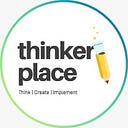ENGAGING KIDS AT HOME USING STEM KITS
Education is an abstract concept that cannot be bound within strict limits. Throughout the history of civilization, knowledge, and wisdom have been passed on from generation to generation. How this was done has undergone significant change over the years. In the initial years, real-life experiences were regarded as the primary medium of education. This later changed to a more structured and theoretical model and practical learning took a backseat. Presently, there is a need for an educational model that is a blend of both these radically different approaches.
WHAT IS STEM LEARNING?
The solution to the dilemma outlined above came from the idea of STEM Learning. The term refers to the study and understanding of the subjects of Science, Technology, Engineering, Mathematics. A majority of schools are now shifting to the STEM model, due to its unique outlook towards the process of education.
As per the older teaching method, these subjects were taught from a purely theoretical aspect, which became monotonous. This restriction imposed upon education was eliminated by the adoption of STEM Learning.
The model prescribes that the study of these basic, foundational subjects should be done in a manner that combines theory with firsthand practical knowledge. For the theoretical part, reliance is placed on books and other written content. The practical part is where the horizons of education are truly broadened under this model because almost every experience can be converted into a STEM teaching moment. Thus there is a plethora of experiments and activities that can be used for this purpose.
ACTIVITIES RELATED TO STEM LEARNING
Irrespective of the specific type of activities undertaken, the purpose behind them remains the same. There are specific skills that are sought to be ingrained in students, and all activities are directed towards that. These skills include critical thinking, analyzing situations, and developing a problem-solving approach.
There are certain characteristics of the activities that make some more successful in inculcating the above-mentioned skills in students than the others. Thus while choosing an activity; the following requirements must be satisfied:
- It must be a real-world activity so that students can relate to it.
- The activity must work towards a specific goal and have a definite result.
- It should encourage students to apply their learned knowledge towards the solving of the problem.
In a school setting, experiments and activities can be easily generated to the available infrastructure and equipment. It is a common notion that STEM activities cannot be devised or engaged in at home. This, however, is a misguided belief. STEM Learning does not demand any special place or thing; it only needs a receptive and curious mind.
STEM LEARNING KITS
In theory, these activities are easy to innovate and develop even from one’s home. However, it is a daunting and cumbersome process to keep looking for ways in which practical STEM concepts can be included in a student’s routine. Due to this foreseeable difficulty, the idea of STEM Kits emerged. These kits may be likened to a compilation of STEM-related activities and experiments and can be done by students from the comfort of their homes. The kits are a one-stop-shop for all the practical training requirements of a student.
Thinker Place is a digital platform that focuses on the imparting of STEM Education from home. They have thoughtfully created STEM Kits for a student which are easy to use and hence allow students to be independent. The kits are curated in a way that sparks and ignites a flame of invention and curiosity in the children. They contain fun and engaging tasks which contribute towards children retaining their interest. The biggest advantage of these kits is that they are curated to suit the age and intellectual capacity of different student groups.
6 to 8 Age Group
The kit available for this group has been made as per the capacity of the children for whom it is intended. It uses simple things that are known to these young minds to introduce them to complex principles. Over 3 months, different projects are delivered as a part of the kit. Some of the educational issues tackled through these projects are:
- Disaster mitigation using sensory alarms
- Basic principles of electricity
- Energy conversion
8 to 10 Age Group
This age group often brings with it a wave of newfound curiosity towards everything that children see around them. It is crucial for their learning process that this curiosity be cradled and allowed to bloom. The kit for this age group has been created in a way that boosts their inquisitiveness. The key concepts introduced through the course of the 3-month kit projects include:
- Workings of a sensory module and pump motor
- Regulation of the water levels of a tank
- Basic principles of physics and robotics
10 to 12 Age Group
By the time they attain this age, children have gained certain knowledge about educational concepts. Hence the main purpose of the activities of this kit is to encourage them towards the practical application of those concepts. The main issues addressed in this kit are:
- Measuring distance using ultrasonic sensors
- Sensory measurement of temperature and humidity
- Automation techniques used in security systems
The use of STEM Kits allows children to enjoy and benefit from the activities from their homes. There is hence no restriction as to the place from where they can engage in STEM Learning.
